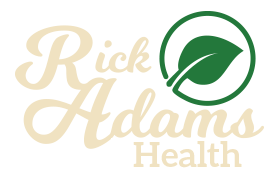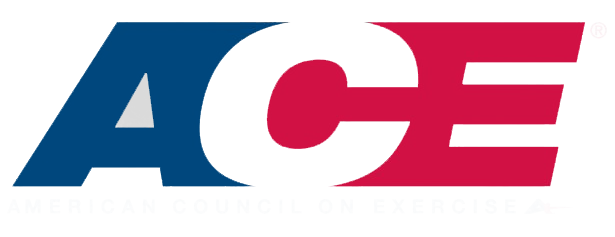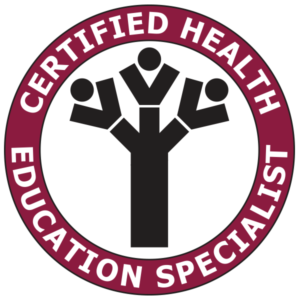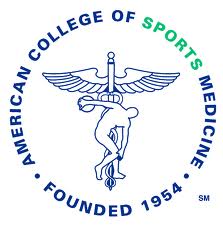Health Coach Review: Yoga
This is the first article in a periodic series where I will give my honest opinion on exercises, eating habits, and other health-related activities. These articles will be about activities that are new to me personally and I will share my thoughts on them as a health professional.
Over the summer, I went to a free, outdoor yoga event at a local baseball field. It was a light-intensity workout that lasted about 45 minutes, and I enjoyed it very much. While I was there, I received a certificate for a free week of yoga at a local studio. Since the certificate was good for the rest of the year, I decided to use it in December when the weather became cold.
About a month ago, I started with the intention to try the different yoga classes and attend more than one a day, if possible. They had 30 minute, 45 minute, and one hour classes. The classes were based on yoga basics, power yoga, and Baptiste Power Vinyasa. I noticed quickly how much of a challenge yoga can truly be. Even simple poses like “Upward Salute” were fairly intense when following the correct technique (stretching hands towards the sky, lifting through the torso, shoulders back, and fingers spread apart). It focused not just on improving flexibility, but also strengthening the entire body as well.
Even with just one week of yoga, I could feel specific benefits. I am already a flexible person, but I did notice a slight improvement. I also noticed an improvement to my balance. Yoga can put you into unorthodox positions in which good balance is required. It can be easy to forget that yoga is a form of strength exercise and is a great tool to make your entire body stronger and more structured. Also, I enjoyed the end of our classes were we took a few minutes to lie down on our backs and relax with a lavender water-soaked facecloth resting on our eyes. It was a nice way to calm down and relax after a fairly intense workout before leaving class.
After my week was finished, I realized there are great benefits that people of all ages and abilities can receive from yoga. I believe that people who are not comfortable lifting weights or enjoy conventional gyms would benefit the most from this type of exercise. Due to the amount of stretching, holding poses, and the body strength required, it is also great for improving posture and relieving joint pain by improving joint-supporting muscles. While you are unlikely to bulk up through yoga alone, it will definitely help you become leaner.
Overall, I greatly enjoyed my classes during that week and continue to practice at home on my own many of the poses that I learned. I hope to return soon because I liked having instructors giving feedback in a small group environment. I already have a new yoga mat for when I get the chance to return. If you have an interest in yoga or want to improve your physical activity away from the gym, then have an open mind and give it try.

CHES, ACE Health Coach, AFPA Nutrition & Wellness Consultant
Understanding Non-Meat Protein Sources
One misconception I hear from time to time is that you have to eat meat in order to get a proper intake of daily protein. While meat products do have all the amino acids to make a “complete” protein, they are not the only choice. There are several non-meat options available but there is a trick to getting the most bang for your buck when eating your non-meat proteins.
Proteins are made from 20 different types of amino acids. Thankfully, your body naturally produces 11 of those amino acids. The nine amino acids that the body does not naturally produce are called essential amino acids. They are “essential” because it is essential that you eat them. These nine essential amino acids are important for several reasons, such as fighting off infection, producing healthy skin, breaking down fat, and developing proper brain function.
There is debate whether there is a need to combine non-meat protein sources in order to receive the correct amount of all nine essential amino acids. This theory is known as “complimentary proteins” and deals with combining non-meat sources of protein. Some examples are pairing beans (legume) with rice (grain), peanut butter (legume) and wheat bread (grain), and cereal (grain) with milk (dairy). While some argue it is not absolutely necessary to make these combinations, you will intake all nine essential amino acids if you do.
Non-meat sources of protein have different amounts of protein in them. Some of the highest protein options come from dairy products like cheese, yogurt, or milk. However, there are a variety of non-meat foods you can eat in order to increase protein intake, including almonds, walnuts, green peas, broccoli, asparagus, green beans, spinach, artichokes, chickpeas (hummus), soy products, oatmeal, quinoa, lentils, brown rice, and black beans.
There are also protein powders that can be derived from some of the food items I listed above. The most common protein source in a protein powder is whey, which comes from milk. There are also protein powders available with soy protein, pea protein, and brown rice protein. Whey protein will always have the most saturated fat because it is derived from an animal source. Always be mindful of the sugar content of protein powder as well. Many people want their protein powder to taste good, but make sure it is not a glorified chocolate/vanilla/ strawberry milkshake.
There are many ways in which you can acquire your protein intake through a variety of different types of food. This does not mean you cannot ever have meat, but do realize it is not the only source in which you can receive appropriate amounts of protein.

CHES, ACE Health Coach, AFPA Nutrition & Wellness Consultant
3 Ways to Set Yourself up for New Year’s Resolution Success!
Here we are at the end of the year. Looking back on the past year, we reflect on what we have achieved and what we hope to accomplish in the New Year ahead of us. People think about what their New Year’s resolution should be. Some people consider it seriously, and others somewhat jokingly say what they would like to accomplish. While many resolutions do not come to fruition, there are ways to achieve yours. New Year’s resolutions often fail because people do not set themselves up to succeed. You would not take a test or give a speech without some kind of planning or preparation. Let’s take a look at some ways to turn your resolutions from a wish into a realistic goal.
Put the Holidays Behind You
When the New Year comes, I often work with people that set one or more resolutions. Sometimes they say it in an apologetic manner, as if it sounds silly or cliché. They understand that many people set these resolutions but give up on them soon thereafter. Honestly, waiting for the New Year to set new goals for yourself is a good idea for several reasons. In the last few months of the year, the days begin to get darker, the weather begins to get colder in most parts of the United States, and the holiday season sets in (and with it comes stress, sweets, and large meals). As we head into January, the major holidays are behind us and the days (slowly) start to become longer again. The last few months of the year are usually difficult for most people and many people get off track with a healthy lifestyle. Don’t feel bad about making New Year’s resolutions; it actually makes a lot of sense!
Prepare and be Specific
Alright, you have decided that you are going to set one or two resolutions for yourself. Now how exactly are you going to follow through with them? Most people make resolutions with little thought on how they are going to reach their goals; unsurprisingly, this does not work. Before putting your resolutions into action, make a plan for how you will approach them. Set a time frame (Example: “For the next month…” “For the next four months…”), decide what days you will work on your goals (“3 days a week” “every Monday, Wednesday, and Friday”), and obtain what items you need before you begin (“gym membership” “Nutribullet”). Also, make sure to remind yourself of your goals to get into a consistent routine (set phone reminders, write notes on the calendar). By actually having a plan of action, your likelihood of reaching your goals increases greatly.
Partner Up
One of the great things about New Year’s resolutions is that many other people set them too. Everyone has a friend, coworker, or family member that has set a New Year’s resolution. It is a great opportunity to partner up with another person to help each other achieve both your goals. Accountability is vital to sticking with your routine and creating a habit out of your actions. Having another person to help you stay on track throughout the ups and downs improves your chances of reaching your long term goal.
Now you have a better idea how to actually make your resolutions into achievable goals. New Year’s gives everyone an even, fresh start to work on their resolutions. Your goals will still require hard work and may not always be easy. The more planning, preparing, and support you have the greater your chance of success. Best of luck on your New Year’s resolution!

CHES, ACE Health Coach, AFPA Nutrition & Wellness Consultant
How to Have a Happy, Healthy Holiday Season
The Christmas season can be the toughest time of year to keep your eating habits in check with all the food, parties, and sweets. Combine this with the stress of the holidays and the colder weather, and maintaining a healthy lifestyle can be quite a challenge. Let’s address some quick areas to keep you on track this holiday season.
Workplace Snacks/Sweets
The workplace can always be a place full of snacks and sweets but it is never worse than during the holiday season. Bowls of candy and baked goods seemingly overflow this time of year. Throwing out all of your coworkers’ goodies would most likely be frowned upon, so you will have to rely on your own preparation. I know how tough it can be to avoid free sweets at the workplace. First, avoid being hungry. That can sound simple but be hard to accomplish. If you find your stomach grumbling before or after your main meals of the day, then pack a healthier option to munch on in between meals. Fruit, vegetables, nuts, and sunflower seeds are all great snack ideas to get the job done.
Holiday Drinks
While sweets may be the most obvious threat to your dietary habits, keep an eye on those festive holiday drinks as well. It is common to see alcohol served at Christmas parties with your friends and family as well as at your company Christmas party. Too many drinks can not only lead to some embarrassing situations but can also pack a large amount of calories. Make sure to have water with drinks to cut down the calories and stay hydrated. Also, while the most festive of holiday drinks, eggnog, is part of Christmas tradition, it is not the best option for watching your weight. It is a dense, creamy, and high sugar drink that gives you roughly 250 calories per glass. I suggest keeping it to about half a glass. (In my opinion, eggnog seems to lose its pleasant taste the more you drink it anyway.)
Try not to let your healthy habits slip too much during the holidays this year. As I often say, make sure to enjoy time with friends and family. Indulging in a few sweets here and there is alright but don’t overdo it; you should be able to get back to your normal healthy habits soon after the holiday season passes. Make sure to have some fun over the holidays and then we can talk all about our New Year’s resolutions in a few weeks.

CHES, ACE Health Coach, AFPA Nutrition & Wellness Consultant
Setting Realistic and Achievable Goals: 3 Keys to Reach Your Health Goals
It is not uncommon when I first begin working with someone that they have a long list of areas of their health that they want to address and work on. Eat healthier, exercise more, have better sleeping habits, drink less soda/coffee, manage stress better, etc. Those are all fantastic goals, but often people try to work on them all at the same time which can easily overload and cause them to not achieve their goals. Another issue is that someone I’m working with may want to lose weight but thinks they should lose 30 pounds or more in a month. It can sound like a good idea on the surface, but it is unrealistic through a healthy lifestyle change. Understanding what areas of health you want to improve is important, but it is necessary to approach your goals in a realistic and achievable manner.
- One At A Time
For most people, it is best to take on each goal one at a time. For example, put your effort into improving your eating habits, THEN start to focus on improving your exercise habits. Working on too many areas at one time often leads to failure with all areas you are working on. Create a list of which goals are most important to you. Make sure to have consistent success with each goal before moving on to the next goal. This makes the process more organized, less stressful, and easier to manage.
- Break It Down
You may have one large goal, like trying to quit smoking a pack of cigarettes a day or trying to lose 50 pounds. The goal can seem quite daunting and so far away when you first start working on it. It is important to break down your long-term goal into smaller, more manageable goals. Using the earlier examples, you can cut back from 20 to 15 cigarettes or reduce your weight 5 to 10 pounds in the first month. Moving in smaller steps has a greater chance of success than trying to do too much, too soon.
- Recognize Failure Can Lead To Success
Having realistic and achievable goals also means realizing it will not always be easy and you may not always reach your goals the first time. Roadblocks to success come up all the time. A family member gets sick, work responsibilities change, or the holiday season gets busy and stressful. Realize that this is part of the process to success. Go into accomplishing your goals with a mindset of learning throughout the entire process. Be open to better ways to address and succeed at your goals as you go along.
Whether working on many small goals or one large goal, always take time to break down your goals into manageable pieces. It takes time, effort, and patience to achieve long-term success. Learn from your experiences to find the best ways that work for you. While it may not always be easy, make it as manageable as you can to give yourself a realistic chance to achieve your long-term goals.

CHES, ACE Health Coach, AFPA Nutrition & Wellness Consultant
So…What Exactly is Health Coaching?
What a great question; I’m glad you asked! When people hear that I work as a Health Coach I often get asked, “Oh, so you’re a ‘health guy’, but what exactly is it that you do?” Since “Health Coach” is a relatively new title in the health industry, it is that people know little about the specifics of the position. Health coaching involves many areas of health, such as healthy eating, exercise, reducing/managing stress, etc. What really sets Health Coaches apart is the emphasis on disease prevention and behavior change through motivation, goal setting, and accountability.
Health Coaching goes beyond just sharing knowledge on health topics. An in-depth research journal described Health Coaching as, “A patient-centered process that is based upon behavior change theory and is delivered by health professionals with diverse backgrounds.” (Wolever 2013) Health Coaches often focus on the “Why?” Understanding the motivation behind someone’s goals is integral for him or her to reach long term success. It is also important to address past successes, past defeats, and future challenges that will affect someone’s outcome when addressing an area of his or her health. Health Coaches need to have the ability to fully flush out these issues to have a good understanding of the individuals they are trying to assist reach their goals.
I often get asked, “How does someone become a Health Coach?” It is important to have both qualifications and personal skills. Necessary skills for a Health Coach include listening, caring, motivating, and teaching others. Qualifications can vary for a Health Coach. All Health Coaches need to have basic knowledge of health topics. Having a degree in a health related field, such as nutrition or exercise science, lets people know that a Health Coach has spent much time and effort acquiring his or her expertise. Also, certifications are a great way to become more knowledgeable and qualified. These can include certifications as a nutritionist, personal trainer, yoga specialist, etc. One can also be certified as a Health Coach, such certifications usually deal with combining effective behavior change, nutrition, and fitness aspects. When looking to work with or to become a Health Coach, it is vital to have both the necessary skills and qualifications.
Having worked several years as a Health Coach, I understand the wide variety of people that you work with. Some people lack the basic knowledge of what healthy foods they should eat more and what foods they should eat less, whether it be for a healthy lifestyle, to lose weight, or to reduce blood pressure. Other people that I have worked with like nurses, dietitians, and even physicians, have that knowledge but struggle with putting those healthy habits into place due to stress, lack of motivation, or poor time management skills. A Health Coach needs to be versatile to help people with different problems and varying knowledge of health topics. A Health Coach should always strive to make the people he works with self-sufficient so they can live a full healthy lifestyle long term.
Wolever, Ruth, et al. “A Systemic Review of the Literature on Health and Wellness Coaching: Defining a Key Behavioral Intervention in Healthcare.” Global Advances in Health and Medicine (2013): 38-57. https://www.ncbi.nlm.nih.gov/pmc/articles/PMC3833550/

CHES, ACE Health Coach, AFPA Nutrition & Wellness Consultant








